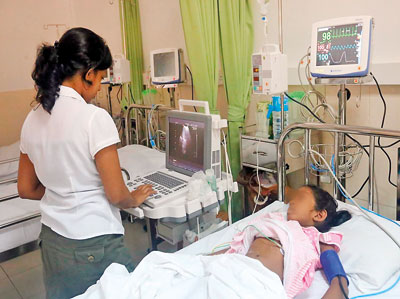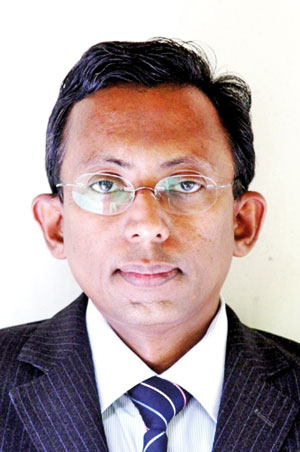News
Target dengue zero deaths: Test at first sign of fever

The Centre for Clinical Management of Dengue and Dengue Haemorrhagic Fever in Negombo (File photos)
Have a fever – think dengue.
As men, women and children being hit by dengue add up, with a death toll of 14 in 3½ months this year, Consultant Paediatrician Dr. LakKumar Fernando who has pulled back many from death’s door has a simple answer in striving for zero-deaths.
“If you have a fever, get yourself tested on Day 1 for dengue,” he says, stressing that early diagnosis will prevent dengue-deaths, for clinical management by his colleagues, both Paediatricians and Physicians, in State hospitals is laudable.
Dr. Fernando talks with much experience as he was instrumental in setting up the Centre for Clinical Management of Dengue and Dengue Haemorrhagic Fever in Negombo, which treats nearly half the total number (50%) of dengue patients from the Western Province. This province accounts for more than half (58%) of dengue cases around the country.
Although Dr. Fernando is now attached to the Gampaha District General Hospital, the Health Ministry has appointed him as a Visiting Consultant to the Negombo Dengue Centre. This had come in the wake of his Negombo colleagues urging Dr. Fernando to continue his services here. He has readily accepted on a voluntary basis and is not accepting any extra payments for his services in helping dengue patients recover. Among the patients he has treated for Dengue Haemorrhagic Fever (DHF) are babies as young as six months and adults as old as 92 years.
Frank and direct about the dengue situation in the country, he says that the prevention of dengue does not seem to have achieved much success and stresses that this is a battle the authorities cannot wage alone. The public too should take equal responsibility in ensuring that homes, schools and the environment are free of mosquito breeding sites. The curative part, however, which is the treatment of dengue in State hospitals has achieved much success.

A Medical Officer performs an essential ultrasound-scan from the bedside of a little girl (File photo)
With solid data to back him up, Dr. Fernando compares numbers between 2010 and 2016 (this year). The whole of 2010 saw 35,000 cases of dengue with 346 deaths. If considering the first four months of that year, the dengue numbers would have been around 12,000 and the deaths 115. This year the number of dengue patients has already reached 14,000 but the deaths have been limited to 14.
“This proves my point that prevention has not progressed at the expected levels but clinical management has saved numerous lives,” he says, reiterating that the next step is to make a concerted effort to bring down the dengue-deaths to zero.
The way forward is to find out on Day 1 of fever whether it is dengue, according to Dr. Fernando, who points out that although on Day 1 of fever, a full blood count (FBC) may indicate a good platelet count, this could be masking dengue and lead doctors astray.
He cites the case of a patient who had a platelet count of 700,000 on Day 1 of fever but went into shock by Day 4 with his platelets plummeting to 5,000. “A high platelet count on Day 1 is no reason to exclude dengue. If it is dengue, the deterioration could be rapid, leaving us wringing our hands in despair, as the virus ravages the patient’s body and sends him into shock.”
This is the nature of the illness and this is why it is critical to be armed with information on the very first day itself, says Dr. Fernando, adding that he draws the ire of many in the health sector for reiterating this point. Underscoring that the NS1 Rapid Antigen Test for dengue, 12 hours into Day 1 of fever, is a good indicator whether it is dengue or not, he says that then people can take stock. For they have the time, if it is Day 1 of fever, to plan their course of action. Then survival will be high.

Dr. LakKumar Fernando
Once it is ascertained that it is dengue, close monitoring should follow to catch the early signs whether it is Dengue Fever (DF) or Dengue Haemorrhagic Fever (DHF), for what could send men, women and children to an early grave is DHF. The tools to differentiate between the deadly DHF and the more-or-less benign DF are ultrasound scans and X-rays to find proof of fluid (plasma) leakage from blood vessels to the chest (pleural cavity) or abdomen (peritoneal cavity).
Appreciating the fact that the Health Ministry has provided ultrasound-scanning facilities to numerous hospitals, he underscores that scans are essential in catching DHF. A close eye also has to be kept on the haematocrit count. All these help in patient management, leading to better survival.
“Now that we have brought down the dengue-death toll, the next urgent step in our successes is to strive for zero. No one needs to die of DHF. We can achieve this,” adds Dr. Fernando with certainty.
(Please see MediScene )

